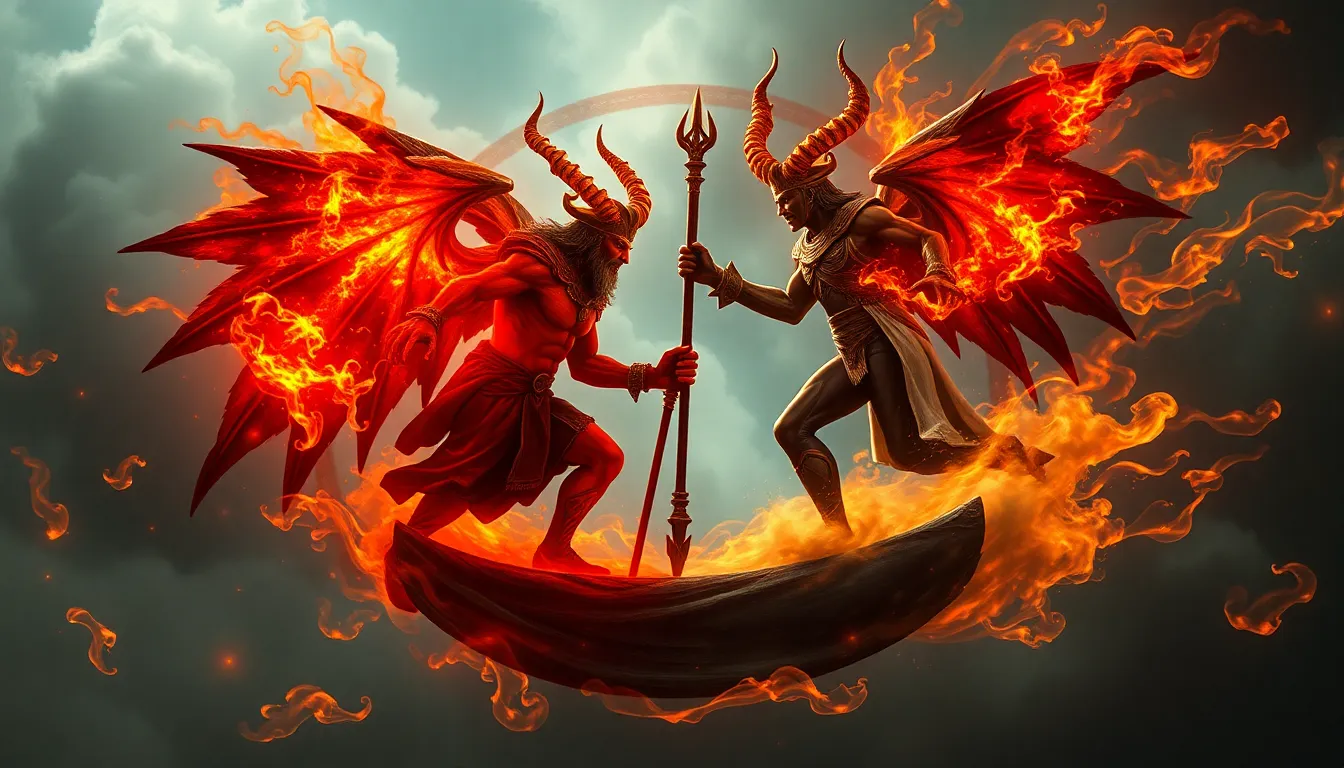The Dragon Slayer: Sigurd’s Triumph over Fafnir
I. Introduction
Sigurd, also known as Siegfried in Germanic tradition, stands as one of the most celebrated heroes in Norse mythology. His legendary status is underscored by his daring feats, particularly his fateful encounter with the dragon Fafnir. Fafnir, a once-dwarf turned fearsome dragon, embodies the treachery and greed that come with power and wealth. This article explores the epic tale of Sigurd and Fafnir, delving into the origins of Sigurd, the nature of Fafnir’s curse, and the heroic journey that leads to Sigurd’s ultimate triumph.
II. The Origins of Sigurd
Sigurd’s lineage is steeped in noble bloodlines, tracing back to the heroic race of the Volsungs. His father, Sigmund, was a legendary warrior, and his mother, Hjordis, played a significant role in his destiny. The events of Sigurd’s early life are marked by tragedy and prophecy:
- Sigmund’s death in battle, leaving Sigurd an orphan.
- Hjordis’s marriage to the king, who sought to control Sigurd’s fate.
- The prophecy foretold that Sigurd would be the slayer of Fafnir, shaping his path from a young age.
III. The Legend of Fafnir
Fafnir’s story begins as that of a dwarf who, consumed by greed, killed his father Hreidmar for the cursed gold he possessed. This act of treachery transformed him into a monstrous dragon, representing the darker aspects of desire and ambition. The implications of this curse were profound:
- Fafnir’s monstrous form made him a formidable adversary, capable of terrorizing the land.
- The cursed gold, known as Andvari’s hoard, brought misfortune to all who possessed it.
- Fafnir’s reign of terror prompted a call for a hero to restore peace.
IV. The Call to Adventure
Regin, a cunning and manipulative dwarf, played a crucial role as Sigurd’s mentor. He sought to use Sigurd to reclaim his father’s treasure from Fafnir. Sigurd’s motivations for taking on this monumental task were both personal and noble:
- Desire for glory and honor.
- To avenge his father’s death and restore his family’s legacy.
- To protect the people from Fafnir’s tyranny.
Central to this quest was the legendary sword Gram, which Sigurd would wield against Fafnir. Forged by the gods, this sword became a symbol of Sigurd’s destiny and strength.
V. The Journey to Face Fafnir
As Sigurd set out on his journey, he undertook meticulous preparations for the battle ahead. This included:
- Forging alliances and gathering resources.
- Training under Regin’s guidance to hone his combat skills.
- Understanding the weaknesses of dragons and strategizing for the encounter.
However, the journey was fraught with challenges, including treacherous landscapes and encounters with foes who sought to thwart his quest.
VI. The Climax: The Battle with Fafnir
The climactic battle between Sigurd and Fafnir is one of the most iconic moments in Norse mythology. The confrontation unfolded with dramatic intensity:
- Sigurd, hidden in a pit, awaited Fafnir’s approach to the water source.
- As the dragon slithered by, Sigurd plunged Gram into Fafnir’s vulnerable underbelly.
- The battle showcased Sigurd’s bravery and tactical acumen, ultimately leading to Fafnir’s demise.
Sigurd’s victory was not merely personal; it symbolized the triumph of good over evil and the restoration of balance to the realm.
VII. Aftermath and Consequences
The aftermath of Fafnir’s defeat brought both fortune and peril. Sigurd claimed Fafnir’s treasure, but the curse of the gold loomed large. The consequences of his actions included:
- The treasure attracted the attention of various factions, leading to further conflict.
- Sigurd’s newfound power and wealth set in motion a series of events that would ultimately challenge his fate.
- The themes of heroism and sacrifice became evident as Sigurd grappled with the burdens of glory.
VIII. Conclusion
Sigurd’s legacy in mythology is one of enduring fascination. His triumph over Fafnir not only solidified his status as a legendary hero but also highlighted the timeless themes of courage, destiny, and the complex nature of heroism. The symbolism of dragon-slaying persists throughout literature, representing the eternal struggle between good and evil, as well as the personal battles individuals face in their own lives. Sigurd’s tale encourages reflection on the importance of bravery, the pursuit of one’s destiny, and the sacrifices that accompany great achievements.




